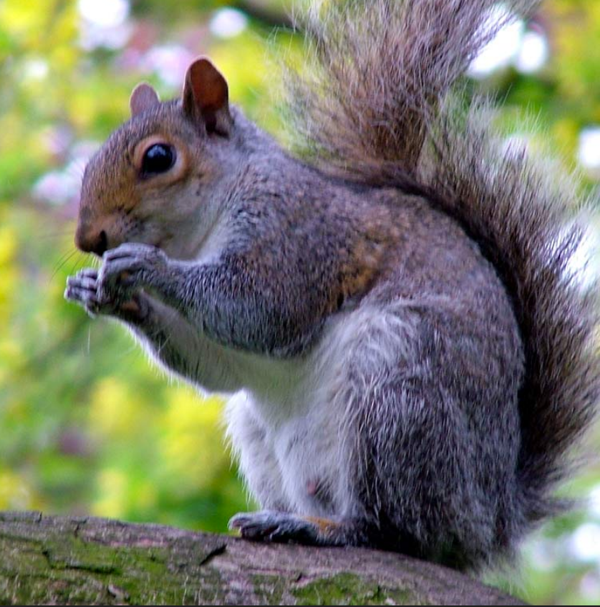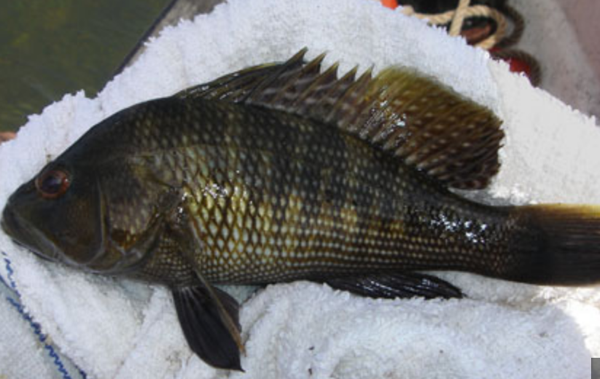
MDC sets migratory game bird and waterfowl hunting seasons
New hunting-zone boundaries approved in 2016 will be implemented beginning this year.
Jefferson City, Missouri - At its April 7 meeting, the Missouri Conservation Commission approved recommendations from the Missouri Department of Conservation (MDC) for the upcoming 2017 migratory-game-bird hunting season and 2017-2018 waterfowl hunting season.
2017 MIGRATORY GAME BIRD HUNTING
Mourning Doves, Eurasian Collared Doves, and White-Winged Doves
Season: Sept. 1 through Nov. 29
Limits: 15 daily and 45 in possession combined total for all three species
Hours: One-half hour before sunrise to sunset
Sora and Virginia Rails
Season: Sept. 1 through Nov. 9
Limits: 25 daily and 75 in possession combined for both species
Hours: One-half hour before sunrise to sunset
Wilson's (Common) Snipe
Season: Sept. 1 through Dec. 16
Limits: 8 daily and 24 in possession
Hours: One-half hour before sunrise to sunset
American Woodcock
Season: Oct. 15 through Nov. 28
Limits: 3 daily and 9 in possession
Hours: One-half hour before sunrise to sunset
2017-2018 WATERFOWL HUNTING
Duck-season dates for 2017-2018 provide additional late-season hunting opportunities.
Teal
Season: Sept. 9-24
Limits: 6 daily and 18 in possession
Hours: Sunrise to sunset
Ducks
Season:
North Zone: Nov. 4 through Jan. 2, 2018
Middle Zone: Nov. 4 through 10 and Nov. 16 through Jan. 7, 2018
South Zone: Nov. 23 through 26 and Dec. 4 through Jan. 28, 2018
Bag Limit: 6 ducks daily with species restrictions of:
- 4 mallards (no more than 2 females)
- 3 scaup
- wood ducks
- 2 redheads
- 2 hooded mergansers
- 1 pintail (new limit)
- 2 canvasbacks
- 2 black ducks (new limit)
- 1 mottled duck
Possession Limit: Three times the daily bag or 18 total, varies by species
Hours: One-half hour before sunrise to sunset
Coots
Season: Same as duck season dates in the respective zones
Limits: 15 daily and 45 in possession
Hours: One-half hour before sunrise to sunset
Snow, Blue, and Ross's Geese
Season: Nov. 11 through Feb. 6, 2018
Limits: 20 blue, snow, or Ross's geese daily with no possession limit
Hours: One-half hour before sunrise to sunset
White-Fronted Geese
Season: Nov. 11 through Feb. 6, 2018
Limits: 2 daily and 6 in possession
Hours: One-half hour before sunrise to sunset
Canada Geese and Brant
Season: Oct. 7-15 and Nov. 11 – Feb. 6, 2018
Limits: 3 Canada geese and brant in aggregate daily, 9 in possession
Hours: One-half hour before sunrise to sunset
Light Goose Conservation Order
Season: Feb. 7, 2018, through April 30, 2018
Limits: No daily or possession limits
Hours: One-half hour before sunrise to one-half hour after sunset
Requirements: Persons must possess a Conservation Order permit to participate in the Conservation Order. An exception to the above permit requirement includes any person 15 years of age or younger provided either she or he is in the immediate presence of a properly permitted adult hunter 18 years of age or older with hunter-education certification or who is exempt.
Methods: For the taking of blue, snow and Ross's geese, hunters may use shotguns capable of holding more than three shells and recorded or electronically amplified bird calls or sounds or imitations of bird calls or sounds.
YOUTH HUNTING DAYS
North Zone: Oct. 28 and 29
Middle Zone: Oct. 28 and 29
South Zone: Nov. 18 and 19
Limits: Same as during regular waterfowl season
Hours: Same as during regular waterfowl season
Requirements: Any person 15 years of age or younger may participate in youth waterfowl hunting days without permit provided they are in the immediate presence of an adult 18 years of age or older. If the youth hunter is not certified in hunter education, the adult must have the required permits and have in his or her possession proof of hunter-education unless exempt. The adult may not hunt ducks but may participate in other seasons that are open on youth hunting days.
FALCONRY SEASONS
Falconry Season for Doves
Season: Sept. 1 through Dec. 16
Limits: 3 daily and 9 in possession, singly, or in the aggregate (any ducks, coots, or mergansers taken by falconers must be included in these limits)
Hours: One-half hour before sunrise to sunset
Falconry Season for Ducks, Coots, and Mergansers
Season: Open during duck seasons (September teal season, youth hunting days, and duck seasons) and Feb. 10 through March 10
Limits: 3 daily and 9 in possession, singly, or in the aggregate during the regular duck-hunting seasons (including teal and youth seasons) and extended falconry seasons (any doves taken by falconers must be included in these limits)
Hours: One-half hour before sunrise to sunset
HUNTING ZONE DESCRIPTIONS
New hunting-zone boundaries approved in 2016 will be implemented beginning this year. A map of the new hunting zones will be included in the MDC “2017 Waterfowl Hunting Digest,” available beginning this summer where hunting permits are sold.
NORTH ZONE: That portion of Missouri north of a line running west from the Illinois border at Lock and Dam 25; west on Lincoln County Hwy. N to Mo. Hwy. 79; south on Mo. Hwy. 79 to Mo. Hwy. 47; west on Mo. Hwy. 47 to I-70; west on I-70 to U.S. Hwy. 63; north on U.S. Hwy. 63 to U.S. Hwy. 24, west on U.S. Hwy. 24 to Mo. Hwy. 10, west on Mo. Hwy. 10 to U.S. Hwy. 69, north on U.S. Hwy. 69 to Mo. Hwy. 116, west on Mo. Hwy. 116 to U.S. Hwy. 59, south on U.S. Hwy. 59 to the Kansas border.
SOUTH ZONE: That portion of Missouri south of a line running west from the Illinois border on Mo. Hwy. 74 to Mo. Hwy. 25; south on Mo. Hwy. 25 to U.S. Hwy. 62; west on U.S. Hwy. 62 to Mo. Hwy. 53; north on Mo. Hwy. 53 to Mo. Hwy. 51; north on Mo. Hwy. 51 to U.S. Hwy. 60; west on U.S. Hwy. 60 to Mo. Hwy. 21; north on Mo. Hwy. 21 to Mo. Hwy. 72; west on Mo. Hwy. 72 to Mo. Hwy. 32; west on Mo. Hwy. 32 to U.S. Hwy. 65; north on U.S. Hwy. 65 to U.S. Hwy. 54; west on U.S. Hwy. 54 to the Kansas border.
MIDDLE ZONE: The remainder of Missouri.
NONTOXIC SHOT REQUIREMENTS
Shells possessed or used while hunting waterfowl and coots statewide, and for other species as designated by posting on public areas, must be loaded with material approved as nontoxic by the U.S. Fish and Wildlife Service.

Missouri - Memorial Day weekend brings an extra-special celebration for squirrel hunters and bass anglers in Missouri. The Missouri Department of Conservation (MDC) reminds them that the Saturday of Memorial Day weekend, May 27, marks the opening of both squirrel season statewide and catch-and-keep bass season in most streams south of the Missouri River.
Hunters can pursue fox and gray squirrels from May 27 through Feb. 15, 2018, with rifles, shotguns, and other legal firearms methods, along with archery equipment, slingshots, or atlatls. The daily limit for hunting and trapping is 10 with a possession limit of 20. Valid permits for squirrel hunting are: Archery Hunting, Daily Small Game, Small Game Hunting and Fishing, and Small Game Hunting.
Hunters with valid permits can also take squirrels with cage-type traps. Traps must be plainly labeled on a durable material with the user's full name and address, or conservation number. Squirrel traps must have openings measuring 144 square inches or less, for instance, 12 inches by 12 inches. Hunters must attend their traps daily. The same regulations apply to rabbits and groundhogs during their respective seasons.

Memorial Day weekend brings an extra-special celebration bass anglers in Missouri. The Missouri Department of Conservation (MDC) reminds them that the Saturday of Memorial Day weekend, May 27, marks the opening of both squirrel season statewide and catch-and-keep bass season in most streams south of the Missouri River.
The black bass catch-and-keep season applies to most streams south of the Missouri River for largemouth, smallmouth, and spotted or Kentucky bass and runs from May 27 to Feb. 28, 2018. Anglers may catch and release these species legally all year, anywhere in the state. They may keep legal-sized bass caught from impoundments and some rivers and streams all year long, statewide. In most of the state's waters, the daily limit on black bass is six. Black bass taken from rivers and streams must be at least 12 inches long in most areas. Additional specific regulations may apply to specific waters or areas. Anglers must have a valid fishing permit or be exempt.

Leave baby wild animals where you find them, or put them back in the nest area.
Missouri - Spring brings the births of wild animals such as birds, rabbits, and squirrels. With that come good intentions of kind-hearted people who want to adopt baby animals they find because they think they have been orphaned or abandoned.
The Missouri Department of Conservation (MDC) reminds people to leave these young wild animals where they find them, or return them to their nests or nest areas if possible.
“Baby animals are rarely abandoned or orphaned,” said MDC State Wildlife Veterinarian Sherri Russell. “The wildlife parent is afraid of people and will retreat when you approach. If the baby animal is left alone, the parent will usually return. Also, parent animals cannot constantly attend to their young so often they spend many hours each day gathering food for the offspring.”
Russell added that baby birds are common animals people want to help by adopting them.
“If you see a baby bird on the ground hopping around and it has feathers, leave it alone because it is a fledgling and the parents are nearby keeping an eye on it,” she explained. ‘If you find one that is featherless, it probably fell out of nest. Return it to the nest if you can, or at least near the nest.”
Another common problem is dogs catching baby rabbits and mowers running over nests.
“Baby rabbits seldom survive in captivity and actually can die of fright from being handled,” Russell explained. “Even if they are injured, return the baby rabbits to the nest or the general nest area. The mother will most likely return.”
She added most wild mothers do not abandon their young because of a human smell on them, and most baby wild animals do not survive in captivity.
“While people may have good intentions, the care and rehabilitation of wild animals requires special training, knowledge, facilities, care – and permits,” she said. “Wild animals, if they are to survive in captivity, often require highly specialized care. Without such care, they will remain in poor health and may eventually die. And it is illegal to possess many wild animals without a valid state or federal permit.”
Russell added, “Animals are better off in their natural habitats where they are free to reproduce and carry on their species. If a wild animal is broken to captivity, it will probably die if returned to the wild. Also, many wild animals are nocturnal. This means they are not active until after dark. They sleep during the day and can be quite disturbing at night while people sleep.”
She noted wild animals can become dangerous to handle as they mature, can carry parasites and disease, and can damage property.
“Native wildlife can carry mites, ticks, lice, fleas, flukes, roundworms, tapeworms, rabies, distemper, tuberculosis, respiratory diseases, and skin diseases,” Russell explained. “Some of these diseases can be transmitted to humans.”

Stoddard County, MO - The Missouri Department of Conservation (MDC) has named Michael Collins as the new conservation agent for Stoddard County. Collins replaces Mark Reed, who recently promoted to district supervisor with MDC.
“Stoddard County has wonderful outdoor opportunities, caring communities and much to offer,” Collins said. “I look forward to working with the public to help protect and manage fish, forests and wildlife.”
Originally from Rockford, Ill., Collins relocated to Southeast Missouri in 2006. He later graduated high school in Naylor and received an Associate of Science degree in Administration of Justice from Three Rivers College in Poplar Bluff. He then transferred to Southeast Missouri State University and received a Bachelor of Science degree in Wildlife Conservation Biology, which is where he says his true passion lies.
Collins began work with the Conservation Department in March of 2014 as the Angler Education Assistant with Fisheries Division after becoming a volunteer in 2013. He graduated from the Conservation Agent Training Academy in 2015 and was assigned to Scotland County. Collins recently relocated to Stoddard County with his new assignment.
Conservation agents are licensed peace officers of the State of Missouri who are charged with enforcing the rules of the Wildlife Code of Missouri and other state and federal laws. The duties of a conservation agent vary with the season. During warmer months an agent may check fishing permits and creel limits or catch someone fishing through illegal methods. Duties related to hunting generally occur in the colder months, with patrol and stakeouts as a normal part of the job. Agents also have many duties in the areas of wildlife, fisheries and forestry management, as well as working with schools and libraries to teach conservation-related skills and ethics.
Agent Collins can be reached at (573)421-3240 or by email at michael.collins@mdc.mo.gov.

